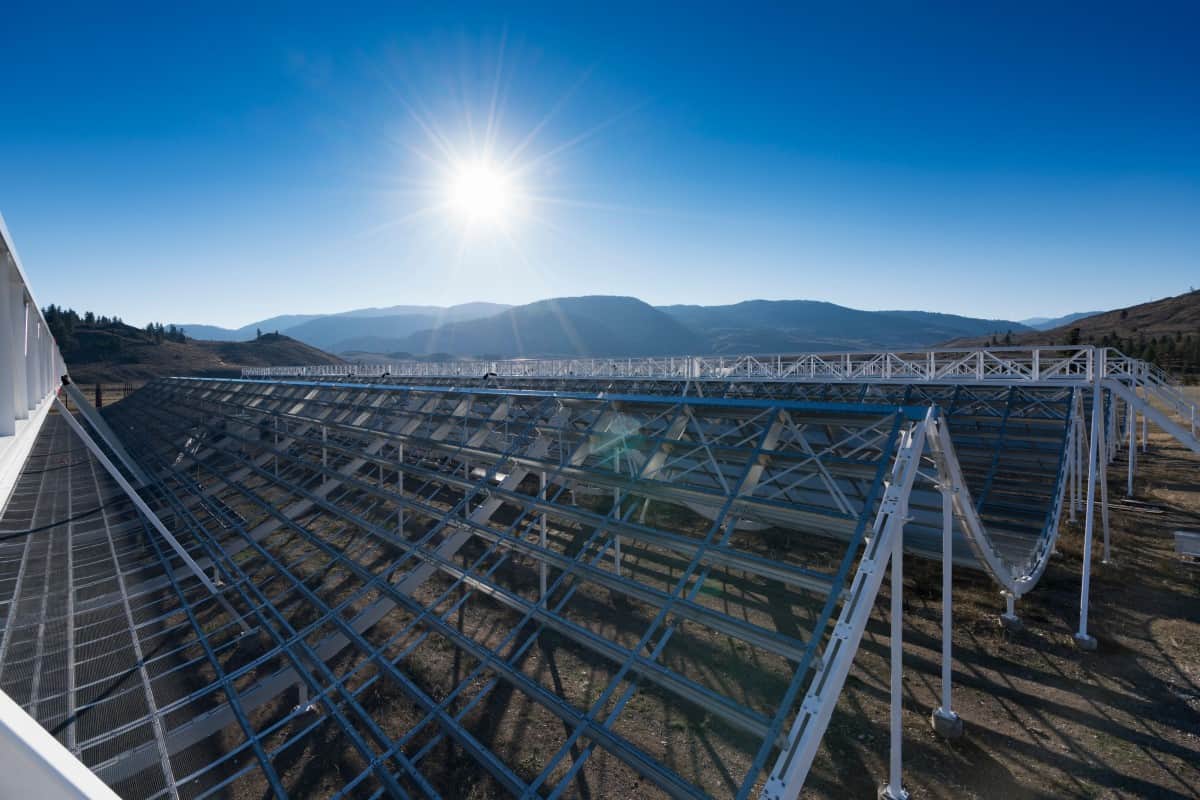
The greatest number of fast radio bursts (FRBs) ever to be observed from a single source has been reported by an international team of astronomers. Led by Di Li and Pei Wang at the Chinese Academy of Sciences, the group used the Five-hundred metre Aperture Spherical radio Telescope (FAST) in China to detect more than 1600 radio bursts from FRB 121102 within a span of just two months. The observations allowed them team to carry out the first detailed statistical studies of the FRB phenomena – shedding new light on their astrophysical origins.
In 2007, two astronomers at West Virginia University detected an extremely rapid burst of radio waves, just under 5 ms in duration. Since this discovery, hundreds of similar FRBs have been detected in separate studies. Most FRBs are detected as single events, but in a small fraction of cases, FRBs have been shown to repeat. This has allowed astronomers to roughly identify the galaxies where these events originated.
Compelling mystery
Although they are relatively weak once they reach Earth, astronomers know that the bursts involve the release of large amounts of energy – a year’s worth of the Sun’s total energy output over the span of just a few milliseconds, for example. A variety of theories have been put forward to explain FRBs, including merging black holes, magnetized neutron stars, and exotic defects in the early structure of the universe. So far, however, no one theory has emerged as being more plausible than any other, and today, the astrophysical sources of FRBs remain a compelling mystery.
Over 47 days between August and October 2019, Li and Wang’s team detected a record-breaking 1652 FRBs originating from an object called FRB 121102, which appears to be located in a dwarf galaxy about three billion light–years from Earth. This is the first known repeating FRB and it was discovered in 2021.
High activity
The FAST tally of 1652 events is greater than all previous observations of FRB events combined. At one point of particularly high activity, the astronomers recorded as many as 122 bursts in a single hour.

Milky Way magnetar could be the source of a fast radio burst
Such an extensive sample size allowed the team to do a detailed mathematical analysis of the properties of the bursts. This revealed key differences between lower- and higher-energy FRBs. Contrary to some theories, the analysis of FASTS’s data revealed little repetition in the bursts over timespans ranging from just 1 ms to 1000 s. This lack of periodicity challenges the idea that FRBs may originate from single rotating objects, such as neutron stars.
In addition, the fast rate of bursts within the event implies that FRBs can be generated extremely efficiently – discrediting the idea that their triggering mechanisms requiring large amounts of energy. Altogether, the team’s discoveries place tighter bounds on existing FRB theories and could bring astronomers a step closer to uncovering their enigmatic origins.
The research is described in Nature.
